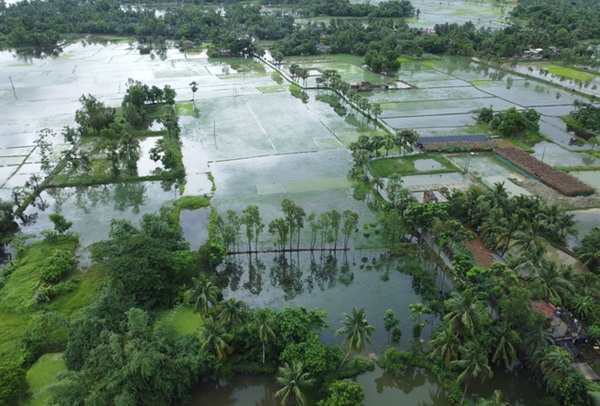.png)
Week in Numbers – Tracking India’s Economic Pulse
Not withstanding the government’s confidence, the fiscal situation appears under pressure due to income tax cuts in the Budget and GST rationalisation.


Datametricx is a veteran journalist tallying the macro game, keeping score of the numbers that shape India’s economy and policy.
October 6, 2025 at 11:56 AM IST
India’s fiscal deficit in April-August rose 37.5% year-on-year to ₹5.98 trillion, accounting for 38.1% of the full-year Budget target. As a share of the Budget estimate, this is the highest level at the end of August since 2020-21, when revenues contracted sharply following the COVID-19 pandemic.
Total expenditure during April-August increased 13.8% to ₹18.81 trillion, driven by a 43.4% surge in capital expenditure. Total receipts rose only 5.4% to ₹12.83 trillion, despite a record ₹2.69 trillion surplus transfer from the Reserve Bank of India, reflecting subdued tax collections. Gross tax revenues grew just 0.8% to ₹13.44 trillion. The lacklustre growth in tax collections was primarily due to the contraction in income tax following the Budget sops and lower customs duty revenues. Income tax collections fell 2.5% to ₹4.41 trillion, while customs duty revenues declined 11.9% to ₹830 billion.
To meet the Budget target of ₹42.70 trillion in 2025-2026, tax revenues need to grow 18.8% in the remaining seven months—a daunting task given the income tax reliefs and recent GST rate cuts. Although the government remains confident of meeting the fiscal deficit target of ₹15.69 trillion, or 4.4% of GDP, weak revenues could necessitate expenditure curbs, particularly in capital spending, during the second half of the year.
GST collections rose 9.1% year-on-year to ₹1.89 trillion in September, marking the fastest pace in four months. Net of refunds, collections increased 5.0% year-on-year to ₹1.60 trillion. In April-September, gross collections rose 9.8% to ₹11.93 trillion—well below the 14.1% growth projected in the Budget. With the recent GST rate rationalisation, collections may decline sharply from October, when the full impact of the September 22 changes will be reflected.
The southwest monsoon was above normal for the second consecutive year. The country received an average rainfall of 937.2 millimetres during June-September—7.9% above the normal rainfall of 868.6 millimetres—the highest since 2020. Rainfall was 27% above normal in northwest India, 15% above normal in central India, and 10% above normal in the south peninsula, while it was 20% below normal in northeast India.
The India Meteorological Department has forecast the October-December northeast monsoon rainfall will likely be above normal, at 112% of the long-period average or higher, in Tamil Nadu, Coastal Andhra Pradesh, Rayalaseema, Kerala, and South Interior Karnataka. These subdivisions receive about 30% of their annual rainfall during this period, while Tamil Nadu receives around 48%.
Kharif sowing rose 0.6% year-on-year to 112.1 million hectares as of September 26, 2.2% higher than the normal area of 109.7 million hectares. Rice, which accounts for roughy 40% of Kharif acreage, increased 1.4% to 44.2 million hectares. Pulses acreage edged up to 12.0 million hectares, while oilseeds area declined 5.2% to 19.0 million hectares.
At the end of the southwest monsoon season, water levels in 161 major reservoirs stood at 165.0 billion cubic metres, accounting for 90% of live storage capacity—4% higher than a year ago and 15% above the 10-year average. The above-normal monsoon rainfall, higher Kharif sowing, and adequate reservoir levels are expected to support rural demand and keep food prices in check.
The Reserve Bank of India has revised its forecasts for both growth and inflation. In its October monetary policy, the central bank lowered its CPI inflation forecast for 2025-2026 to 2.6%, down from 3.1% in August, primarily due to lower-than-expected inflation over the past three months. This represents a downward adjustment of 160 basis points from the February forecast of 4.2%. The RBI now projects inflation of 4.5% in April-June 2026, down from 4.9% projected in August.
On the growth side, the central bank raised its GDP growth forecast for 2025-2026 to 6.8% from 6.5%, reflecting a stronger-than-expected first quarter. India’s GDP grew 7.8% in April-June, compared with the RBI’s projection of 6.5%. While the July-September forecast has been raised to 7.0% following the robust start to the years, projections for the final two quarters of 2025-2026 and the first quarter of 2026-2027 have been lowered due to the impact of US tariffs.
After a month’s hiatus, the lending rate on fresh bank loans resumed its decline in August. The average lending rate on fresh rupee loans fell by 6 basis points to 8.75%. The weighted average lending rate of scheduled commercial banks moderated by 58 basis points during February to August, compared with the 100-basis-point cut in the policy repo rate. In contrast, the average deposit rate on new deposits fell by 106 basis points to 5.56%, indicating that banks are protecting their margins. The decline in both lending and deposit rates suggests that monetary transmission is continuing. The Monetary Policy Committee’s statement that current macroeconomic conditions and outlook have opened up policy space to support growth should facilitate transmission.
Capacity utilisation in the manufacturing sector declined sharply to 74.1% in April-June from 77.7% in the previous quarter. Seasonally adjusted utilisation rose slightly to 75.8% from 75.5%, above the long-term average of 73.9%. Though studies suggest that utilisation between 72.4% and 74.4% may trigger private corporate investments, India is yet to witness any meaningful increase in capital expenditure. Funds raised by private corporates for capital expenditure remained stable during April-September, though investments in export-intensive sectors have faced headwinds from global trade uncertainties.
India’s manufacturing PMI fell sharply to 57.7 in September from a 17-year high of 59.1 in July. New orders, output and input buying rose at the slowest pace since May, while job creation retreated to a one-year low. Despite the slowdown, the headline index remained well above its long-term average of 54.2. Business confidence improved to a seven-month high, boosted by GST rate changes, while selling prices rose at the fastest pace in nearly 12 years, outpacing cost increases.
Industrial growth weakened in August, moderating to 4.0% from an upwardly revised 4.3% in July. Manufacturing growth, which accounts for over three-fourths of the Index of Industrial Production, eased to 3.8% from 6.0%. Consumer non-durable goods contracted by 6.3% in August, while growth in consumer durable goods slowed to 3.5% from 7.3% in July, suggesting that household consumption demand remains fragile.
Domestic air passenger traffic contracted year-on-year for the second consecutive month in August, suggesting continued weakness in urban demand. Domestic airlines carried 12.95 million passengers in August, down from 13.13 million a year ago. Passenger traffic in April-August rose by 1.8% year-on-year to 67.53 million.
Electricity generation from conventional sources rose 0.7% year-on-year to 129.7 billion kWh in September. The increase, despite a 0.1% decline in thermal power generation to 119.1 billion kWh, was driven by a 14.5% rise in hydroelectric generation to 22.2 billion kWh. Growth in conventional power has moderated in recent months due to a sharp increase in renewable generation.
Growth in India’s services exports moderated to a 17-month low of 2.8% year-on-year in August at $31.19 billion. Services imports contracted 5.3% to $15.59 billion, leaving the services trade surplus at a nine-month low of $15.60 billion.
India’s foreign exchange reserves stood at $700.2 billion as of September 26, down $2.3 billion from a week earlier and $4.6 billion below the record high of September 2024. Foreign currency assets stood at $581.8 billion, while gold reserves were valued at $95.0 billion. Overall, reserves have risen by $31.9 billion so far in 2025-2026, mainly due to higher gold prices.
India’s external debt rose to $747.2 billion at the end of June, up $11.2 billion from a quarter ago and $65.7 billion a year ago. External debt as a share of GDP moderated to 18.9% from 19.1% the previous quarter. Short-term debt on an original maturity basis accounted for 18.1% of the total external debt, down from 18.3% a quarter ago. On a residual maturity basis, short-term debt accounted for 40.7% of total external debt, down from 41.3% a quarter ago and equivalent to 43.6% of foreign exchange reserves.
Net claims of non-residents on India declined by $16.4 billion during April-June to $312.8 billion at the end of June. The improvement in India’s international investment position was driven by a faster rise in overseas financial assets of Indian residents ($47.8 billion) compared with foreign-owned assets in India ($31.4 billion). The ratio of India’s international assets to international liabilities improved to 79.2% in June from 77.6% a quarter ago and 71.5% two years ago.
Growth in broad money supply (M3) eased to 9.2% year-on-year as of September 19 from 9.5% a fortnight earlier. Currency with the public rose 9.3%, the same as a fortnight ago, but growth in demand deposits with banks slowed to 13.2% from 16.8%. Reserve money growth decelerated to 4.5% year-on-year as of September 26, from 5.6% a week earlier, mainly due to a sharper reduction in bankers’ deposits with the RBI.
Deposits growth print for the fortnight ending September 19 was noted at 9.5% year-on-year, 30 basis points lower than 9.8% recorded in the preceding fortnight. Credit growth, on the other rose 10 bps to 10.4%. The gap between credit and deposit growth widened to 90 bps, highest in around 5 months.
Coming up
- Oct 13 – Consumer Price Index for September
- Oct 14 – Wholesale Price Index for September
- Oct 15 – Trade data for September
Tailpiece



